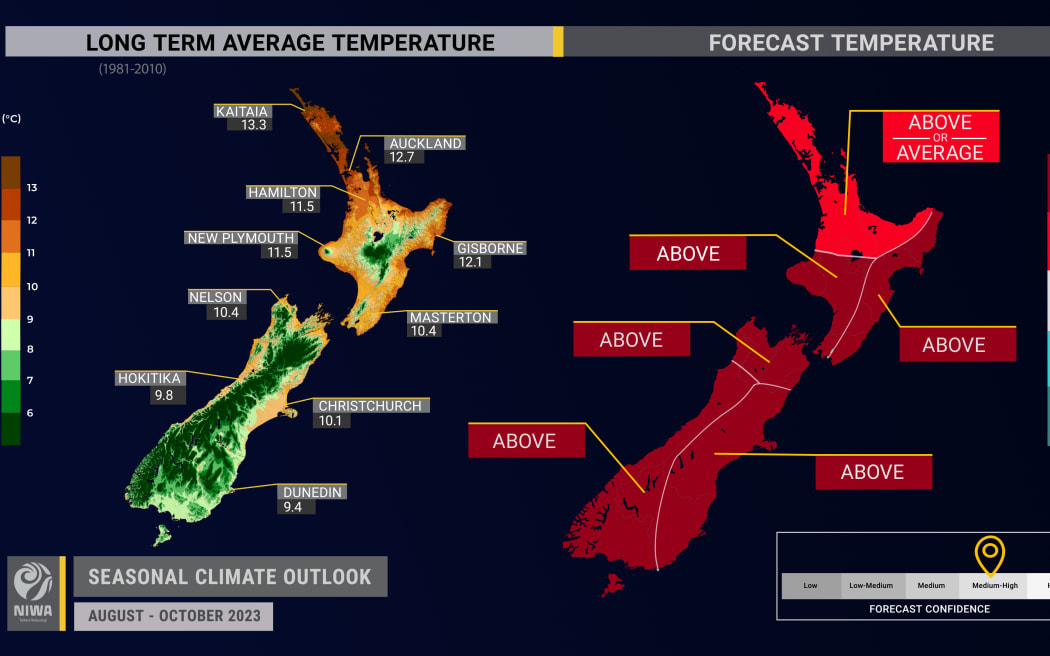Our two state weather forecasters compete for contracts, offer conflicting weather reports, and publicly beef with each other on social media. With climate change making weather forecasting even more complex into the future, it's more important than ever to get the weather right.

NIWA is a crown research entity tasked with climate research and long-term forecasts. Photo: Supplied / NIWA
In 1992, New Zealand's Meteorological Service, the oldest scientific institute in the country, was split up.
MetService took on the duty of day-to-day forecasting. NIWA took on climate research and longer-term forecasts.
"A lot of the books in the old MetService library, they had to decide which would go to NIWA, which would go to MetService, so it was quite a difficult split," says Paul Gorman, a journalist and science writer.
"But it was always quite a clear cut distinction. And yet at some stage, NIWA said on the record that weather forecasting was always part of its game."
More than thirty years later, the two agencies are the subject of a newly-announced government review, spurred in part by NIWA's decision to directly compete with MetService for lucrative weather forecasting contracts.
Relations between the two taxpayer-funded entities are reportedly 'tense'.
"There have been occasions where, if you follow them on Twitter or Facebook, [NIWA] will say 'Westport had its highest ever temperature today', and MetService will be tweeting 'no it didn't, your record is only five years long, ours has been going for a hundred'.
"It's kind of diluting the power of having all these weather records, which is what policy and infrastructure and people's lives are based on – having really robust information.
"You don't want any confusion when people's lives or livelihoods are on the line."
Off the back of Cyclone Gabrielle and the Auckland anniversary weekend floods, there is fresh concern that having two different official forecasts in an emergency could create public confusion – or worse, endanger public safety.
But with both agencies set up as money-makers (MetService as a state-owned enterprise, and NIWA as a crown research entity), sharing information or working together in any way could fall afoul of competition law.
A review into how government weather forecasting works is long overdue, Gorman says.
"There's been questions raised about this by some of our private weather companies ... We've got some of the most restrictive policies when it comes to accessing weather data.
"You have to pay a lot of money if you want data. What's ironic about that is a lot of that weather data that NIWA now holds was collected by members of the public over the years; people that had a rain gauge in their garden and checked it every day for 50 years."
Gorman recalls wanting to write a story about a tornado that hit Christchurch in the 1980s, going to NIWA, and being told it would cost him $800 for a page of data.
Despite technological advances, weather forecasting is still an inexact science – especially on an island as mountainous and windswept as New Zealand, Gorman says.
"If you sat down and thought, 'I'm going to design a country that's going to be a real challenge for weather forecasting', this would be it, really."
Former TV3 weather presenter Rose Daly tells The Detail about receiving faxes from MetService in the 1990s and tweaking the language of the forecast to make sure it made sense to the audience for the 6pm news.
The weather is becoming less and less predictable as the effects of climate change are felt. In its 2022 annual report, MetService says when it designed its weather alert system, it assumed there would be one or two severe events each year - but in 2022 and 2023 each, they released five red weather warnings, the most serious alert level.
"With a warmer atmosphere, there is so much more energy in the atmosphere than there was," Gorman says.
"We're getting these severe weather events that are hitting a very localised area that these [forecasting] models are unable to predict."
Find out why MetService and NIWA come up with differing forecasts by listening to the full episode.
Check out how to listen to and follow The Detail here.
You can also stay up-to-date by liking us on Facebook or following us on Twitter.

Photo:


